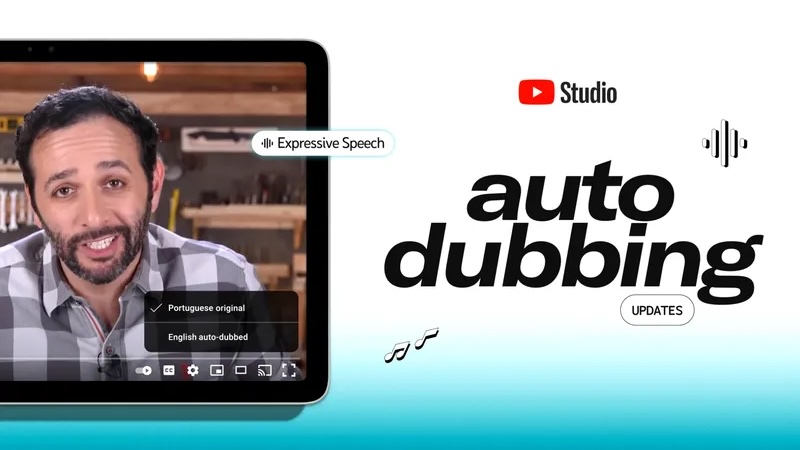
Anyone who uploads a video to YouTube will be able to have it automatically translated into another language in the future. The function is called “auto dubbing” – in German: “automatic synchronization” – and is intended to help overcome language barriers.
In September 2024, YouTube officially announcedwant to introduce a function for automatic translation of videos. The company had previously used algorithms to generate subtitles. Now the video platform is going one step further.
In the future, users should be able to automatically synchronize videos when uploading them and have them translated into other languages - without much effort. Because artificial intelligence is supposed to take over this process, which is usually quite complex. YouTube relies on the synchronization service Aloud from sister company Google.
YouTube: This is how the automatic synchronization of videos works
With automatic synchronization, YouTube first creates a transcript of the original audio file. Users can then check this text and adjust it if necessary. Aloud then translates the text and creates an audio track in the selected language.
According to YouTube, it tested the function with hundreds of selected video producers for several months. The company is now making automatic synchronization available to the first users. In an official email to the first users, which BASIC thinking has, it says:
We’ll soon enable auto-sync for new video uploads to your channel. This means YouTube automatically generates translated audio tracks in different languages to make your content accessible to more viewers.
However, according to YouTube, automatic synchronization of existing videos is not possible. However, newly uploaded videos in Spanish, Portuguese, German, French, Italian, Hindi, Indonesian and Japanese can be dubbed into English. Videos in English can then be dubbed into these languages.
Audio track: Change video language on YouTube
If videos are available in multiple languages, you have the option to choose the soundtrack yourself. To do this, click on the gear symbol in a video and then click on “Audio track“. All available languages will then be displayed there.
YouTube wants to enable natural-sounding synchronizations with its auto dubbing function. The newly generated audio tracks should correspond to the tone and intonation of the authors using AI. The atmosphere of the original sound should be retained.
Also interesting:
- Interactive content: Netflix is cleaning up – only four titles available
- Viaplay starts in Germany – as an Amazon Prime Video channel
- Milkmaid calculations: Elon Musk talks up Twitter user numbers
- New rules for video platforms: What is the Online Safety Code?
The post Automatic synchronization: YouTube translates audio tracks into other languages by Fabian Peters appeared first on BASIC thinking. Follow us too Facebook, Twitter and Instagram.
As a Tech Industry expert, I believe that automatic synchronization of audio tracks on YouTube is a valuable feature that can greatly enhance user experience and accessibility. By translating audio tracks into other languages, YouTube is enabling a more diverse audience to access and enjoy content that may have previously been inaccessible to them due to language barriers.
This feature not only expands the reach of content creators and contributes to a more globalized online community, but also allows for greater inclusivity and understanding among viewers of different linguistic backgrounds. Automatic synchronization of audio tracks on YouTube demonstrates the power of technology to break down barriers and facilitate communication and connection on a global scale.
However, it is important to consider potential challenges and limitations of automatic translation, such as accuracy and nuances in language that may not always be accurately captured. It will be crucial for YouTube to continue refining and improving this feature to ensure that translations are as accurate and effective as possible.
Overall, I see automatic synchronization of audio tracks on YouTube as a positive development that has the potential to enhance the platform’s overall user experience and promote greater cultural exchange and understanding in the digital space.
Credits